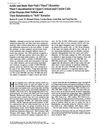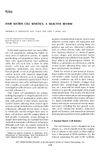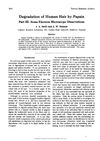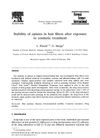A Discourse on Human Hair Fibers and Reflections on the Conservation of Drug Molecules
June 1996
in “
International Journal of Legal Medicine
”
human hair fibers drug molecules forensic toxicology lipophilicity pKa value plasma protein binding molecular size cell membrane complex CMC melanin granules hair fiber morphology hair growth cycle hair cuticle hair cortex hair medulla pigmentation biological factors ultrastructural factors biochemical factors pharmacological factors hair fibers drugs toxicology drug absorption hair structure hair growth hair pigmentation
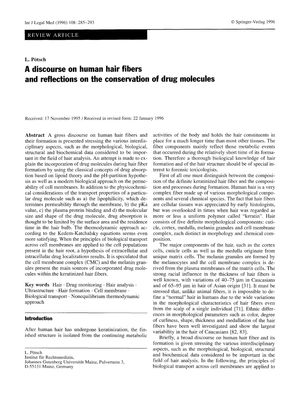
TLDR Hair analysis for drugs needs a better understanding of how drugs enter hair, considering factors like hair structure and pigmentation.
The 1996 document provides an in-depth analysis of human hair fibers and the incorporation of drug molecules during hair formation, which is significant for forensic toxicology. It explains that drugs are absorbed into hair based on factors like lipophilicity, pKa value, plasma protein binding, and molecular size and shape, with the cell membrane complex (CMC) and melanin granules being primary sites for drug incorporation. The review also discusses hair fiber morphology, the hair growth cycle, and the structure of the hair cuticle, cortex, and medulla. It concludes that classical concepts of drug absorption are not sufficient to fully explain the transport processes of drugs into hair fibers and that a more sophisticated understanding of these processes is necessary for accurate drug monitoring through hair analysis. The document also highlights the influence of pigmentation on drug measurements in hair and the importance of considering biological, ultrastructural, biochemical, and pharmacological factors for valid interpretation of hair analysis results.

